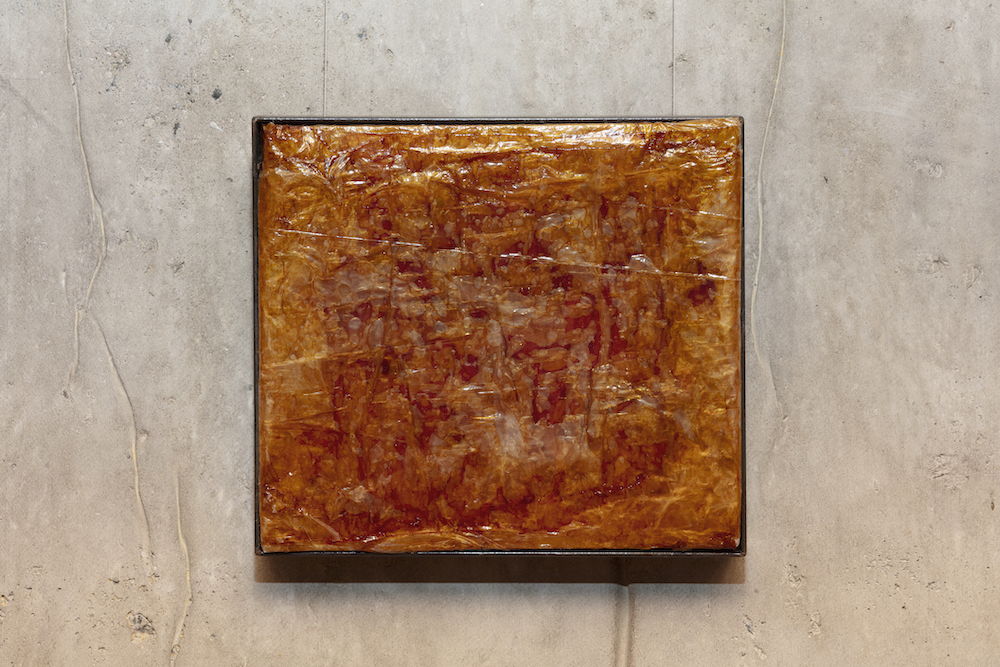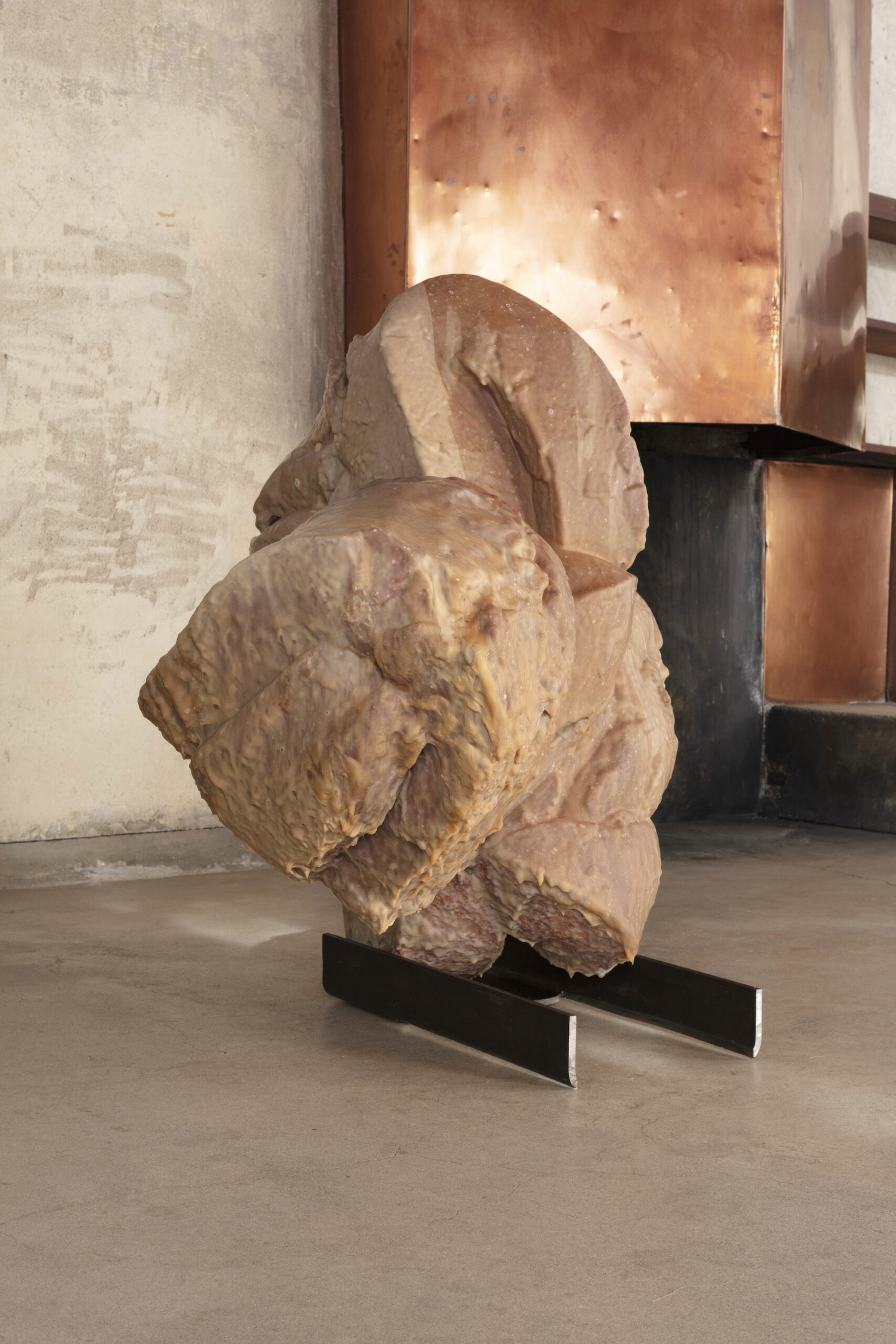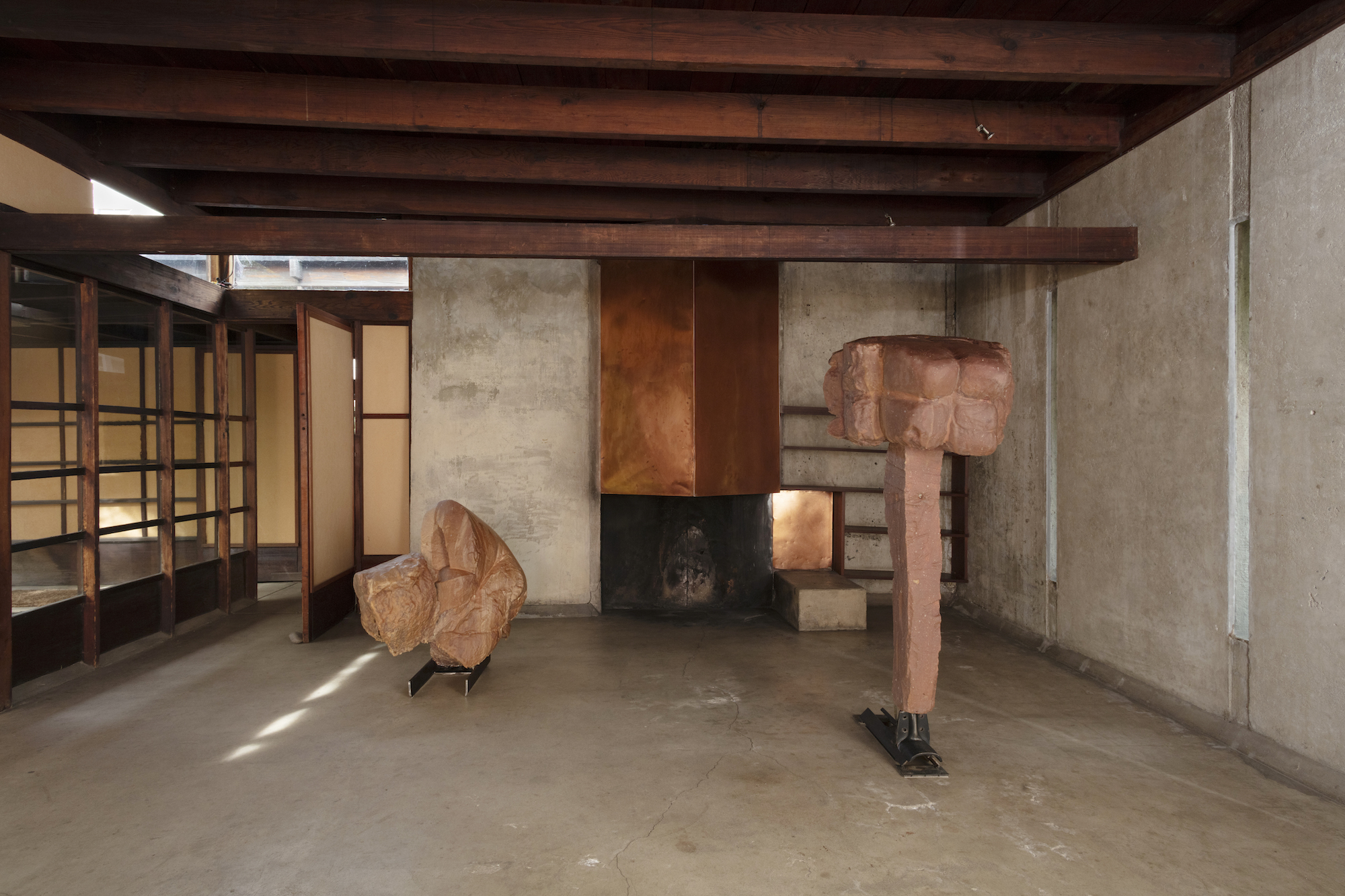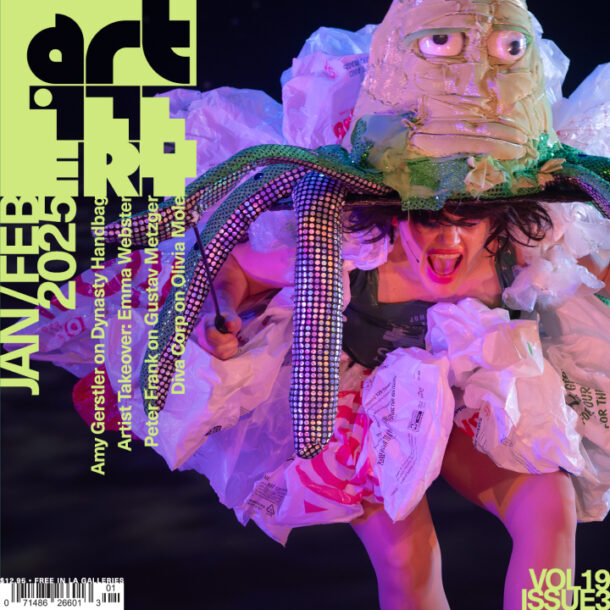The R.M. Schindler House is unexpectedly quiet. Despite being smack-dab in the middle of West Hollywood, there’s a noticeable lack of noise around the house and grounds, as if the air is somehow thick enough to deaden dog barks and car horns. The silence somehow feels borne of the house rather than its surroundings. As one of three Los Angeles headquarters for the MAK Center for Art and Architecture, the Schindler House—the namesake of architect Rudolph Schindler—feels like a break in time. A leader of Southern California Architectural Modernism, Schindler’s 1922 home is the prototype for the aesthetic that placed a high value on unusual material pairings and the dissolution of boundaries demarcating inside and outside. In the hanging silence, the smell of old wood and ripening plants easily transports you back one hundred years, but with the resurgence of mid-century architecture, the site remains tethered to the present, too. It’s the ideal site for the free-standing sculptures and wall works of Schindler’s contemporary Austrian peer, Helmut Lang.
The photos of the works in Lang’s show “What remains behind” don’t do them justice. One must see them in person. On-screen or on paper, the sculptures appear (rather unsurprisingly) stoic and imposing—cold and indifferent, even. Made of foam, shellac, latex, resin, and steel, they contrast with the house’s cement floor and wood beams, appearing somehow darker. Curator Neville Wakefield scattered the sculptures across low-slung rooms, and in the photos, the works appear to domineer the space, suggesting an impenetrable tightness within an otherwise open architecture.
But the sculptures shone bright amber when I visited in the midday sun of a Sunday in February. The six tallest works, all part of the Fist series (works in series 2015–2017), are spindly stalks with bulbous growths atop them resembling crude femurs or, as the title implies, closed hands punching through the air to the low-hung ceilings. Their latex skins gleamed as if sweating, and I half expected them to begin dripping onto the floor. The natural light cutting into the house bounced off their curves and crannies, giving their twisted forms a vitality as if muscles caught in the act of contortion, capable of twitching and rearranging at any moment. Though brighter and smaller in person—the tallest of them almost rising to meet me head-on—they retained that imposing quality, exuding a pressing unease.
The two wall pieces felt more conventional, rectangular, and neatly enclosed in steel frames. Titled kleine Portrait Arbeit I and kleine Portrait Arbeit II, respectively (the loose translation of which is “small portrait work”), the plastic, wax, and shellac pieces resemble scabs ripped from a wound, slapped onto the wall, and framed. Repulsed though I should have been, all I wanted was for my fellow visitors to clear out so I could run my hand along their uneven skins.

Helmut Lang, kleine Portrait Arbeit I, 2015–17. Courtesy of the artist and MAK Center for Art and Architecture.
In a later email interview with Lang, he asked, “Is sculpture not a form of body by definition?” The answer is, of course, yes, though I’d argue to various degrees. Auguste Rodin’s The Age of Bronze (1875) is a body, and Richard Serra’s Tilted Arc (1981) is a body, but is Lang’s? These are bodies. Fractured, skinned, expelled. Those fists could be my fists; that skin could be my skin. Perhaps that’s why I find them so enticingly destabilizing: their familiarity, their proximity to my physical self. The collection is decidedly uncanny, for what is the uncanny if not the familiar made strange?
The uncanny, though, cannot be separated from trauma, a current that underlies much of Lang’s work. “At some point, human instinct overrides traumatic events and focuses on survival—not what has happened, but how to deal with it going forward,” wrote Lang in our correspondence. “It is a long journey that leaves the security of experience to create new realities.” To override trauma requires expelling oneself from certain comfort to the liminal space of frightening indefinability. It’s a violent act made visible in the two smaller sculptures, Prolapse I
and Prolapse II (each 2024). Reaching no more than three feet, they resemble rocks or, more fittingly, something you might dig out of your ear after a long time without cleaning. Unlike those in the Fist series, these pieces don’t have that iridescent sheen encasing them, which permits you to notice the texture more thoroughly, picking up on the bubbles and gaps left in their shellac coats. Like Schindler, whose architectural ethos put great emphasis on melding together the inside and outside, Lang’s Prolapse series toys with the edges of the human body and those fragile boundaries that demarcate our in and our out. The most visceral in name, the two works are manifestations of the liminal space that is “the body” and “of the body.” Left on the ground, they sit as the literal detritus of what’s been expelled, remainders of a whole that’s since moved on.

Helmut Lang, prolapse I, 2024. Courtesy of the artist and MAK Center for Art and Architecture.
Underlying the show is a concern with history, specifically its burden. Therefore, it seems fitting for the show to be situated in the Schindler House, a space rife with temporal significance. The objective of preserving the home is to retain a spirit of the past in the present and to provide a jumping-off point for a yet-to-be-constructed future. For Lang, “The accumulated past, consciously or unconsciously, forms the physical, emotional, and intellectual material one is today. That is the starting point for all we do going forward.” Materially, Lang often uses the discards of former projects and scraps of handed-down objects that hold a history in and of themselves. He confronts these materials without sentimentality, tackling the malleable bits of collected waste until they become his hardened fists, skins, and prolapses.
The convergence of his own unrevealed history with that of the material undoubtedly contributed to the tension I experienced while walking through the exhibition. Lang’s abject objects are the broken bodies of multiple histories made manifest. The unspoken stories embedded in the works cut through the thick silence of the house and hang in the air as ghostly presences.


